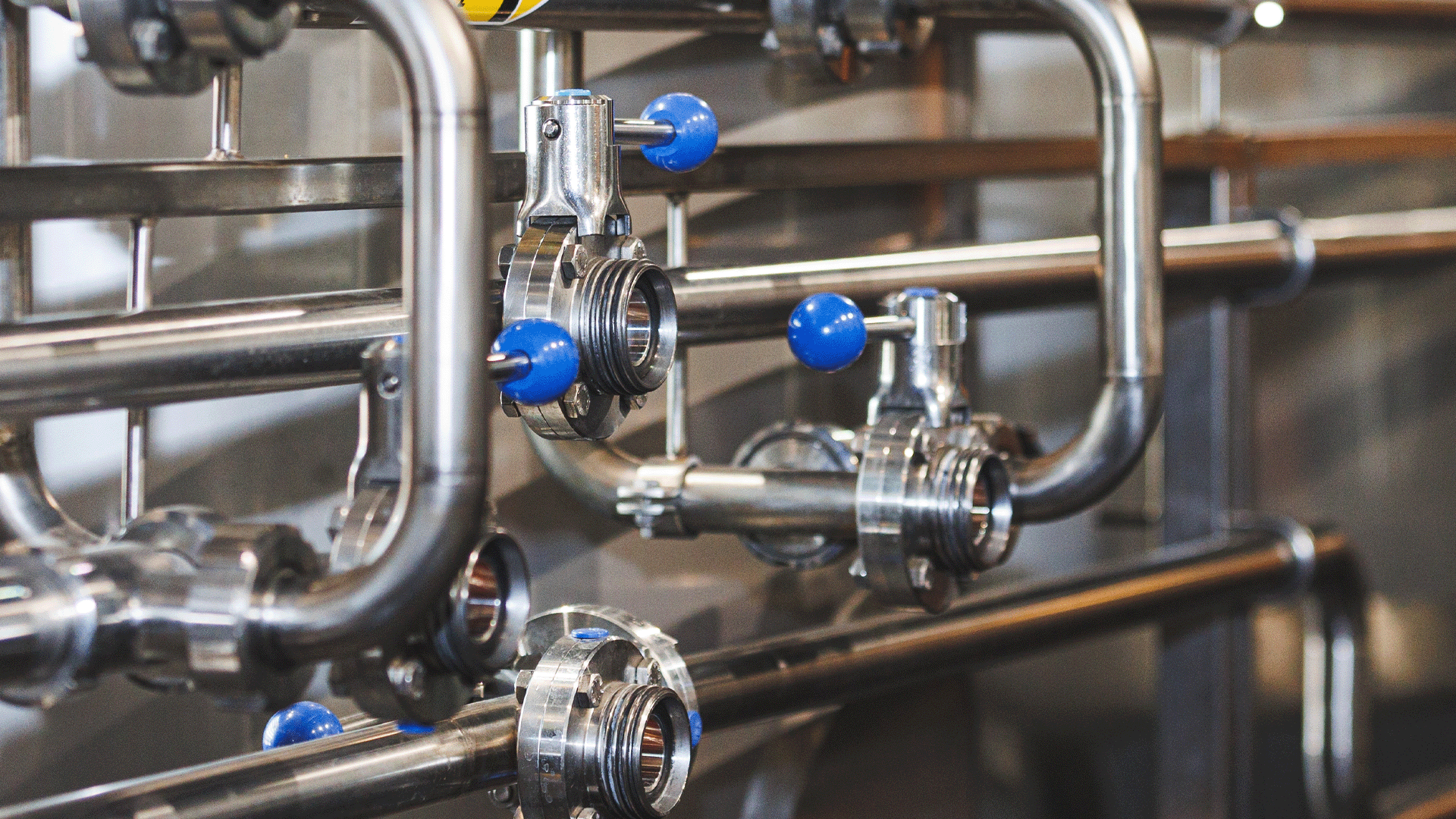When selecting the right valve for your sanitary processes, diaphragm valves often stand out as a reliable option. They offer distinct advantages in hygienic environments, but they aren’t always the best fit for every application. In this post, we’ll dive into the key benefits and drawbacks of using diaphragm valves in sanitary settings to help you make informed decisions for your process systems.
Explore our selection of diaphragm valves here.
Advantages of Diaphragm Valves
1. Excellent Cleanability and Sterility
One of the most significant advantages of diaphragm valves is their cleanability. They are ideal for hygienic processes, such as in the food and beverage, pharmaceutical, and biotech industries, where contamination risks must be minimized. Their simple, smooth internal surface and the design of the valve prevent product buildup and reduce the potential for bacterial growth. This makes them highly suitable for Clean In Place (CIP) and Sterilization-in-Place (SIP) protocols, ensuring product purity.
2. Low Maintenance and Longevity
Diaphragm valves are typically designed with fewer moving parts compared to other valve types. The flexible diaphragm is the only component that comes into contact with the fluid, which means less wear and tear on internal components. As a result, these valves are generally low-maintenance and have a long service life in sanitary applications.
3. Versatility in Applications
Diaphragm valves can handle a wide range of fluids, including viscous liquids, slurries, and even corrosive chemicals, making them versatile across multiple industries. They are also available in both manual and automated versions, offering flexibility for different operational needs.
4. Hermetic Sealing
Another advantage is the hermetic seal created between the diaphragm and the valve body. This ensures that the operating mechanism is isolated from the process media, which is critical in preventing contamination in sanitary environments. This feature also enhances the valve’s ability to handle potentially hazardous or sensitive fluids safely.
Disadvantages of Diaphragm Valves
1. Pressure and Temperature Limitations
Diaphragm valves are generally not suitable for high-pressure applications. The flexible diaphragm, while effective at sealing, can degrade under constant high pressure or extreme temperatures. This limits their use in systems where elevated pressure or temperature is a constant.
2. Limited Size Availability
Diaphragm valves are typically available in smaller sizes, usually up to 8 inches in diameter. For larger-scale systems, you might need to look at other types of valves, such as butterfly or ball valves, which can accommodate higher flow rates and larger pipes.
3. Diaphragm Replacement
Though diaphragm valves are known for their low maintenance, the diaphragm itself does need periodic replacement, especially in more aggressive applications. Replacing the diaphragm can be a labor-intensive task and may require shutting down the system temporarily, which can disrupt operations if not planned properly.
4. Cost Considerations
Compared to some other valve types, diaphragm valves can be more expensive, particularly for higher-end materials that meet strict sanitary standards. While their durability and performance can justify the initial investment, it’s important to consider the total cost of ownership, including maintenance and diaphragm replacement over time.
Conclusion
Diaphragm valves offer a range of benefits in sanitary applications, particularly where cleanliness, sterility, and gentle fluid handling are essential. However, they are not without their limitations, especially when it comes to pressure, temperature, and size constraints. Understanding these factors can help you determine whether diaphragm valves are the right fit for your specific process needs.
For more information on the types of diaphragm valves available and how they can enhance your sanitary system, check out our product selection here.

